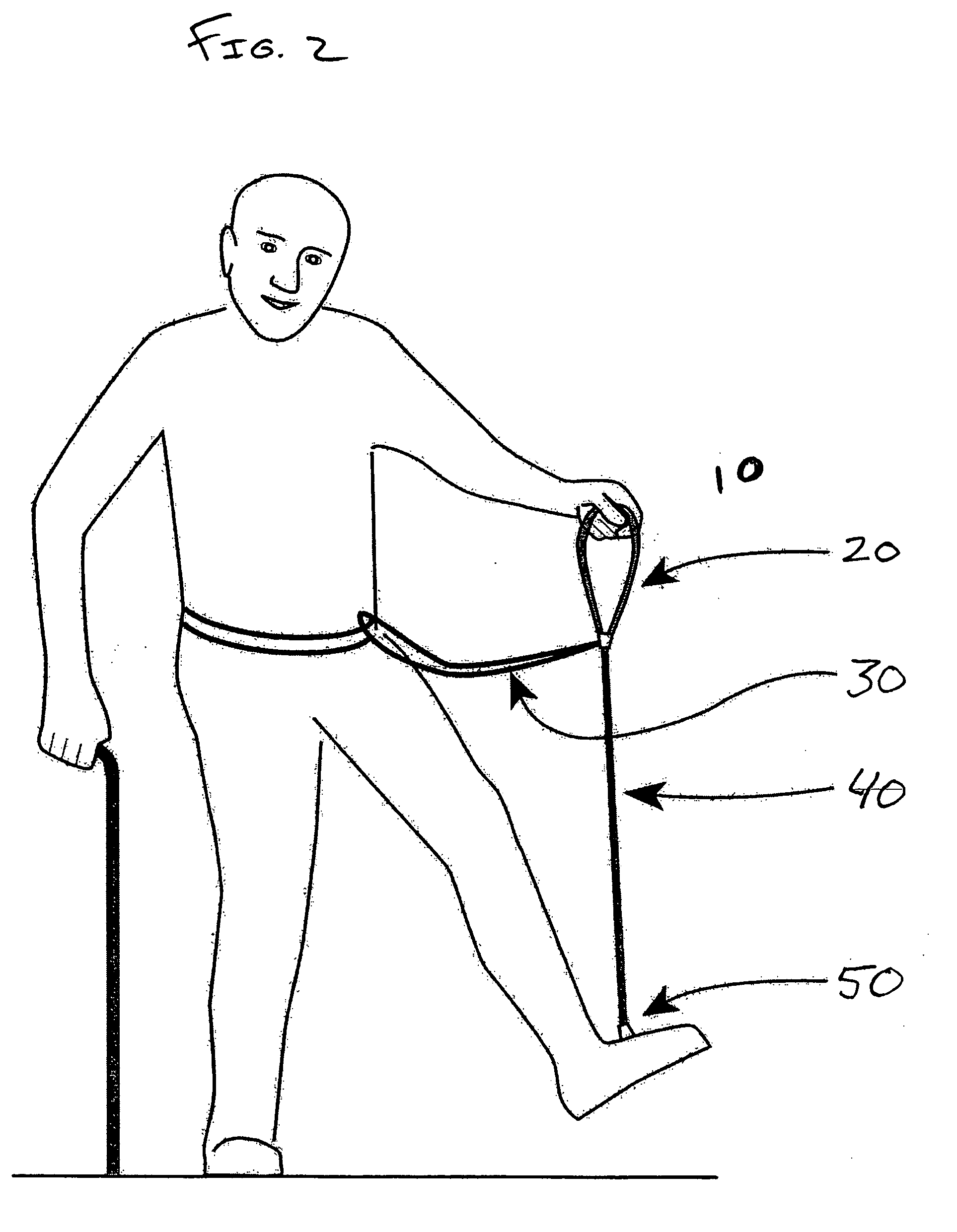Device for assisted movement of a disabled leg
a technology for disabled legs and wheelchairs, applied in the direction of resilient force resistors, walking aids, physical therapy, etc., can solve the problems of muscle contraction when lifting the leg, leg control is still a problem, and the leg cannot be effectively controlled for simple activities
- Summary
- Abstract
- Description
- Claims
- Application Information
AI Technical Summary
Benefits of technology
Problems solved by technology
Method used
Image
Examples
Embodiment Construction
[0022] Referring to FIG. 1 the device 10 includes a handle 20 on its proximal end. The handle 20 may be configured to allow the user direct handheld manipulation of the device 10 to administer motive force to the user's leg at will without risk of re-injury or pain. The device 10 may be attached on or about the user's foot or footwear via the distal attachment apparatus 50. A dynamic elastic force mechanism 40 extends longitudinally between the handle 20 and the distal attachment apparatus 50.
[0023] Handle 20 may be a strap configured in a loop and constructed of fabric or other suitable material. In another embodiment, the handle 20 may be a loop formed integrally into the dynamic elastic force means. Alternatively, handle 20 may be a simple handgrip constructed of a semi-rigid molded plastic or any other suitable material. As shown in FIG. 2, the handle 20 is placed conveniently at or about the user's waist. This handle 20 placement provides the user with the ability to administe...
PUM
 Login to View More
Login to View More Abstract
Description
Claims
Application Information
 Login to View More
Login to View More - R&D
- Intellectual Property
- Life Sciences
- Materials
- Tech Scout
- Unparalleled Data Quality
- Higher Quality Content
- 60% Fewer Hallucinations
Browse by: Latest US Patents, China's latest patents, Technical Efficacy Thesaurus, Application Domain, Technology Topic, Popular Technical Reports.
© 2025 PatSnap. All rights reserved.Legal|Privacy policy|Modern Slavery Act Transparency Statement|Sitemap|About US| Contact US: help@patsnap.com



